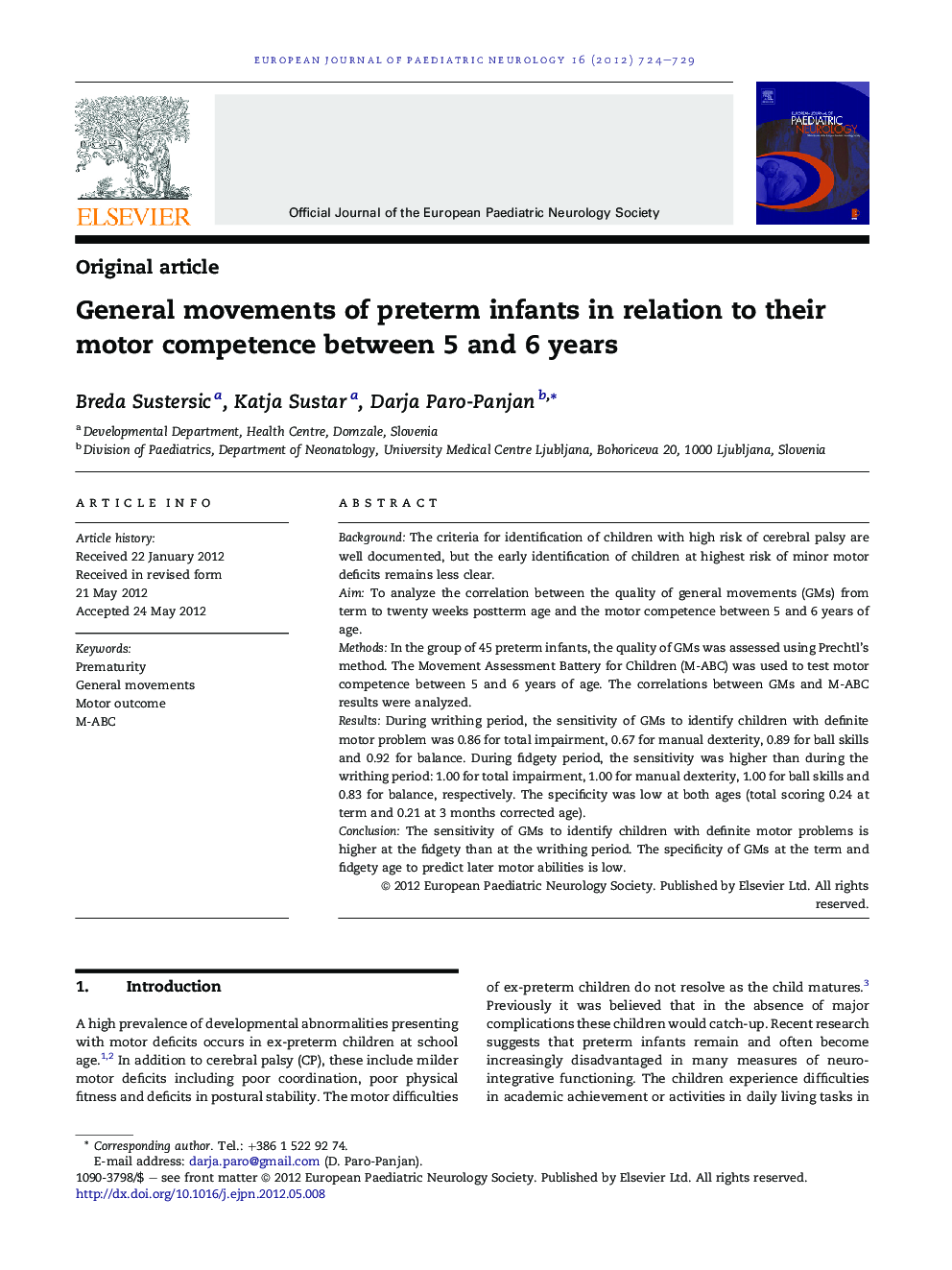| Article ID | Journal | Published Year | Pages | File Type |
|---|---|---|---|---|
| 3053915 | European Journal of Paediatric Neurology | 2012 | 6 Pages |
BackgroundThe criteria for identification of children with high risk of cerebral palsy are well documented, but the early identification of children at highest risk of minor motor deficits remains less clear.AimTo analyze the correlation between the quality of general movements (GMs) from term to twenty weeks postterm age and the motor competence between 5 and 6 years of age.MethodsIn the group of 45 preterm infants, the quality of GMs was assessed using Prechtl's method. The Movement Assessment Battery for Children (M-ABC) was used to test motor competence between 5 and 6 years of age. The correlations between GMs and M-ABC results were analyzed.ResultsDuring writhing period, the sensitivity of GMs to identify children with definite motor problem was 0.86 for total impairment, 0.67 for manual dexterity, 0.89 for ball skills and 0.92 for balance. During fidgety period, the sensitivity was higher than during the writhing period: 1.00 for total impairment, 1.00 for manual dexterity, 1.00 for ball skills and 0.83 for balance, respectively. The specificity was low at both ages (total scoring 0.24 at term and 0.21 at 3 months corrected age).ConclusionThe sensitivity of GMs to identify children with definite motor problems is higher at the fidgety than at the writhing period. The specificity of GMs at the term and fidgety age to predict later motor abilities is low.
